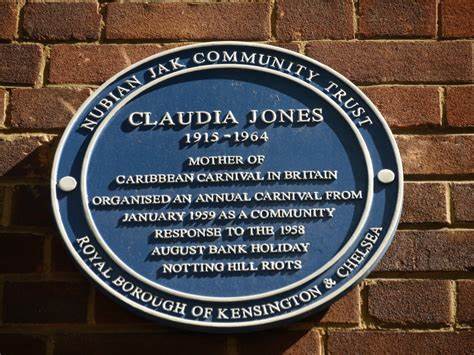The Gospel Oak, north London house where Claudia Jones died on Christmas day 1964, had a Nubian Jak Community Trust blue plaque unveiled to commemorate the life and work of the radical activist.
The plaque, co-sponsored by Camden Council and BTWSC/African Histories Revisited, at 58 Lisburne Road has been long in coming. Former Camden councillor Gerry Harrison and the late New Journal editor Eric Gordon were among those behind a campaign that started some twenty years ago to have Jones honoured with a plaque on the last house she lived in.
Whilst there are other Jones plaques in Ladbroke Grove, west London and Vauxhall, south London, these make varying references to the Notting Hill Carnival, which Jones did not materially or spiritually found. Whilst she can rightly be described as the Mother of Caribbean Carnival, as her West Indian Gazette sponsored cabaret type Caribbean Carnivals took place annually between 1959 to 1964 across various London venues, none were in Notting Hill.
Incidentally the first of her carnivals took place at St Pancras Hall, which is now the Camden Town Hall. The plaque unveiled avoids any contested accolades, by sticking to the facts, which among many, include human rights activist, feminist, journalist and publisher.
BTWSC/African Histories Revisited has organised conferences centred around Trinidadian-born Jones, who has been described as the “greatest British African activist ever.” An indefatigable campaigner and staunch Communist, her activism cut across race, gender, class, labour, and colonialist, imperialist, internationalist and global/pan-African movements.











